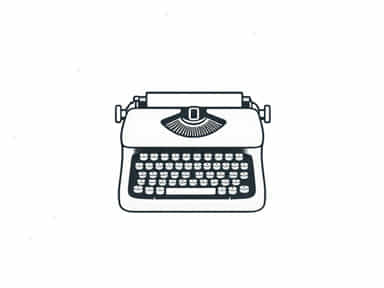Language is constantly evolving, and with the advent of technology, new terms emerge or old ones resurface with updated meanings. One such term that has sparked curiosity is typewrite. While most people are familiar with the term typewriter or the act of typing, the word typewrite often raises questions. Is it a legitimate word in the English language? Can it be used correctly in modern writing and speech? Understanding its usage, history, and relevance can help clarify whether typewrite is a proper and accepted term today.
Understanding the Structure of the Word Typewrite
To determine if typewrite is a valid word, it helps to break it down. The word is formed by combining type and write. Both are standalone verbs:
- Type– to write or input text using a keyboard or typewriter.
- Write– to form letters, words, or symbols on a surface or device to convey information.
When combined, the term typewrite theoretically suggests the act of writing using a typewriter. However, linguistic correctness does not always rely solely on theoretical construction. The real test lies in how the word has been historically used and recognized.
Historical Usage of Typewrite
Historically, the word typewrite was indeed used, particularly during the late 19th and early 20th centuries. As typewriters became common office equipment, people started using to typewrite as a verb meaning to write with a typewriter. In that era, secretaries and typists were often referred to as typewriters, and their job was to typewrite letters and documents.
Eventually, the term type became more prevalent, replacing typewrite in daily usage. People began saying, I typed a letter, instead of I typewrote a letter. This shift likely occurred due to simplicity and language evolution. While typewrite has mostly fallen out of common use, it has not entirely disappeared from dictionaries or historical texts.
Is Typewrite Recognized in Dictionaries?
Yes, typewrite is recognized as a legitimate word in several older and comprehensive dictionaries. It is typically listed as a verb and defined as to write using a typewriter. The past tense form is typewrote, and the past participle is typewritten.
However, in modern dictionaries, typewrite is often marked as archaic or rarely used. The dominance of type in everyday language has overshadowed it. Despite its decline in usage, the term remains technically correct and can be used appropriately in certain contexts, particularly when referring to historical settings or in a stylistic manner.
Grammatical Forms and Examples
Here are the grammatical forms of typewrite and examples of how it can be used:
- Base form: typewrite
- Past tense: typewrote
- Past participle: typewritten
- Present participle: typewriting
Example Sentences:
- In the 1950s, many office workers were required to typewrite business correspondence.
- She had typewritten all the reports before the deadline.
- The clerk typewrote each letter with careful precision.
Comparison with the Word Type
It’s important to understand how typewrite differs from type, even though they are closely related. Type is the more commonly used modern term, especially in reference to computers, phones, and digital communication tools.
Key Differences:
- Typewrite: Specifically refers to the act of writing with a typewriter. It has a historical and mechanical connotation.
- Type: Broader usage that includes typing on keyboards, mobile devices, or any digital interface.
For modern contexts, type is generally preferred. However, if you are writing fiction set in the early 20th century or discussing historical office work, typewrite can be an appropriate stylistic choice.
Is Typewrite Commonly Used Today?
In contemporary English, typewrite is rarely used. It has become almost obsolete in casual and professional language. Most native speakers would consider it old-fashioned or unfamiliar. In fact, using typewrite today may cause confusion unless the context clearly involves typewriters or historical references.
However, in academic writing, especially when studying the history of office work or communication technology, typewrite might appear as part of a broader discussion. It serves as a useful reminder of how language evolves along with technology.
Should You Use Typewrite in Modern Writing?
Whether or not to use typewrite in your writing depends on your audience, purpose, and tone. If you are aiming for clarity and modern readability, it is advisable to use type. However, if you are crafting a historical narrative or aiming for stylistic flair, using typewrite can add an authentic touch.
Tips for Usage:
- Use type in everyday writing and conversation for broader understanding.
- Use typewrite when emphasizing the mechanical act of using a typewriter.
- Avoid using typewrite in formal business communication unless the context clearly supports it.
So, is typewrite a word? Yes, it absolutely is. It is a valid, historically grounded English verb that refers to the act of using a typewriter. While it may not be common in contemporary usage, it holds value in specific contexts, especially when referring to the past. For modern usage, the word type has largely taken over due to simplicity and adaptability in the digital age. Still, understanding the term typewrite provides insight into the history of language and technology, and how they shape one another. Using it thoughtfully can enrich your writing and show a deeper awareness of linguistic history.
